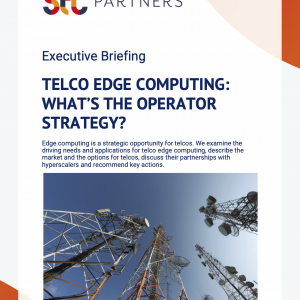Reality Check: Are operators’ lofty digital ambitions unrealistic given slow progress to date?
£1,000.00 excl VAT
STL Partners’ industry transformation analysis, including a recent global survey of telco executives, suggests operators’ digital ambitions are rising fast but, given 9 substantial implementation challenges, too little is currently being done to engender successful industry-wide business model transformation. We also look at the lessons from NTT DoCoMo, one of the operators that has made the most overall progress towards a ‘digital’ model.
Description
Format: PDF filePages: 37 pagesCharts: 16Author: Chris BarracloughPublication Date: February 2015
Table of Contents
- Executive Summary
- Growing telco ambitions in new (digital) business models
- Telco execs are bullish about long-term prospects for new digital business models
- Belief in the importance of future telecoms business models varies greatly by business function and by geography
- Telco execs’ views on digital business Opex and Capex investment are closely correlated with their views on revenue growth
- Calculating a telecoms digital business P&L: Moving from investment in 2015 to (unrealistically?) strong returns in 2020
- STL Partners’ forecast suggests that new digital business should be 25+% of revenue by 2020 to avoid long-term industry decline
- The outlook for Telco 1.0 business models is not positive and Telco 2.0 business models are required to fill the gap
- Investment in new business models is increasing but results from the Telco 2.0 Transformation Index suggest it is still inadequate to engender success
- Scale of NTT DoCoMo’s ‘new digital business’ suggests bold vision is realistic for some players
- Long-term downward trend in Telco 1.0 core services in Japan with digital services a ‘gap-filler’
- Smart Life: A cloud-based (OTT) consumer-centric approach to digital services
- A digital business has fundamentally different characteristics to a telecoms business
- 9 challenges to overcome and all are important
- Overall, operator progress on all 9 challenges remains slow
- Too little progress on core challenges from most operators
- What next? Forthcoming STL Partners’ Telco 2.0 research supporting telecoms transformation
- Appendix 1: Survey details
- Appendix 2: Telco 2.0 Transformation Index overview
Table of Figures
- Figure 1: Digital business model revenue ambition, 2015 and 2020
- Figure 2: Telecoms quarterly revenue in 6 European markets
- Figure 3: Average digital business model revenue ambition, 2015 and 2020 by function and geography
- Figure 4: Average required Digital Business Opex and Capex, 2015 & 2020
- Figure 5: Digital Business P&L for a $100 billion revenue telecoms operator, 2015 vs 2020, $ Billions
- Figure 6: STL Partners’ global mobile telecoms forecast by opportunity area
- Figure 7: STL Partners Telco 2.0 Transformation Index summary results, December 2014
- Figure 8: NTT DoCoMo quarterly voice, data and ‘other’ revenue, Mar 2007-Sep 2014
- Figure 9: Smart Life – NTT DoCoMo’s customer-centric approach to transformation
- Figure 10: Different companies…different business models – the change that telecoms operators are trying to make
- Figure 11: 9 challenges scored by ‘importance for operator digital transformation and future success’
- Figure 12: The degree to which operators have addressed the 9 challenges
- Figure 13: Strategists are much more bullish than other functions about their organisation’s transformation progress
- Figure 14: Lots to change…and its taking too long
- Figure 15: Operators appear to be at very different stages of resolving the ‘Big 6’ challenges
- Figure 16: Defining Digital Services
Technologies and industry terms referenced include: Business Model, capex, Culture, digital services, Disruption, Innovation, Metrics, NTT DOCOMO, opex, Revenue, Smart Life, Synergy Value, Telco 2.0, transformation, Verizon


